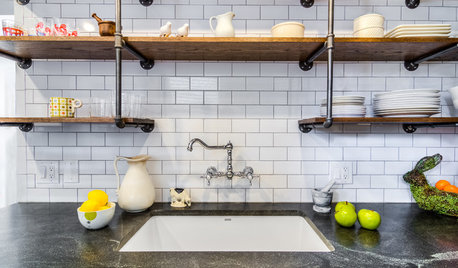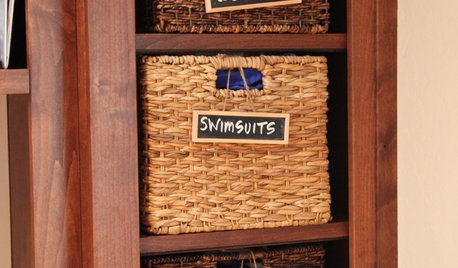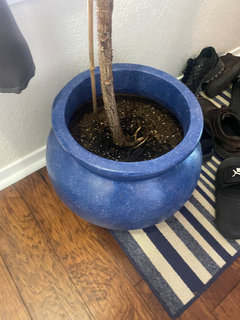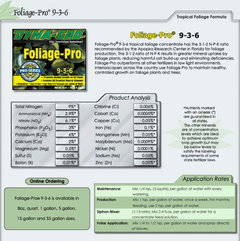Is this scale or something else?
Stef McK zone 8A
6 months ago
Featured Answer
Sort by:Oldest
Comments (11)
Related Discussions
Sooty mold on Little Leaf Linden with insect photos
Comments (4)Aphids are one of those odd bugs that fly at certain points in the on-going life cycle and don't at others. They probably few in at one point last year, and are now living permanently in/on the tree. If you can find a bunch of ladybugs and release them near the tree it might help, 'though maybe not for this year - I'm not sure how long the ladybug cycle is - since ladybug nymphs eat aphids, and the LBs will lay eggs where there is a goodly supply of aphids. Otherwise, a sharp spray of water will wash off a lot of them, - once off the plant, the crawling ones can't get back. Leaves infested with aphids will curl, so that's probably the answer to that. If you can look closely at any of the curled leaves, there are - or were - probably a "nice" population of aphids on the back. For scale photos, if you use Google and hit the Images icon above the "box", you should get more than you want to look at. Just be sure to specify insects, or you will get all sorts of other strange things!...See MoreRe : Black marks on cactus - Is this scale or something else?
Comments (1)Well, it looks a lot like an armored scale insect if it is scale. It would really help if the genus or species of the host cactus is known, since many types of scale insects specialise in a particular plant. With the identity of the cactus, you could possibly narrow it down to the species of scale insect, but more importantly, you would be able to find out all the pests that that plant can have. There is an article here on Garden Web in the FAQs section that talks about how to best remove scale infestations. I hope this can be of some help to you....See MoreHelp with my dwarf bottlebrush!
Comments (0)My callistemon looks awful! It has some kind of scale and something else, a fungus maybe? http://imageshack.us/photo/my-images/818/calistemoenano.jpg/ http://imageshack.us/photo/my-images/576/calistemoenano2.jpg/ I have been removing as many of the scales as possible, as well as bad leaves, but it's almost in all of them. Could this be because I moved it to an area that gets full sun most of the day? It previously only got 2 hours of full sun....See MoreScale "crawlers" or something else?
Comments (4)I strongly suggest that you mix a solution of isopropyl alcohol (70%) and water at a fifty percent (1:1) dilution rate in a plastic spray bottle. Keep it handy to mist your plants every few days in order to gain control of the thrips and other tiny, soft bodied plant pests. You could use a 1:2 (one part water to two parts water with good success, too. The mist can get into the nooks and crannies. Great pictures, by the way. Thanks for making the effort....See MoreStef McK zone 8A
6 months agolast modified: 6 months agoStef McK zone 8A
6 months agoStef McK zone 8A
6 months agoStef McK zone 8A
6 months agoStef McK zone 8A
6 months agotapla (mid-Michigan, USDA z5b-6a)
6 months agoStef McK zone 8A
6 months agolast modified: 6 months agotapla (mid-Michigan, USDA z5b-6a)
6 months agolast modified: 6 months agoStef McK zone 8A
6 months ago
Related Stories

DECORATING GUIDESRoom Doctor: 10 Things to Try When Your Room Needs a Little Something
Get a fresh perspective with these tips for improving your room’s design and decor
Full Story
REMODELING GUIDESArchitect's Toolbox: Scale and Proportion
Designing with proportions found in nature make your space feel more comfortable
Full Story
DECORATING GUIDES5 Decorating Tips for Getting Scale Right
Know how to work art, sectionals, coffee tables, lamps and headboards for a positively perfect interior
Full Story
DECORATING GUIDESLarge-Scale Pieces Give Small Rooms Massive Style
Work bigger elements into a diminutive space and watch its design cred grow by leaps and bounds
Full Story
DECORATING GUIDESYou Said It: 'If You Do Nothing Else ... Clean Your Gutters,' and More
Design advice, observations and inspiration that struck a chord this week
Full Story
DECORATING GUIDESRoom of the Day: Something for Everyone in a Seattle Family Room
Family members downsize to a home that will shorten their commutes and give them more time together — much of it spent in this room
Full Story
KITCHEN DESIGNNew This Week: 3 Modern Kitchens With Something Special
Looking to make your kitchen feel unique? Look to these spaces for inspiration for tile, style and more
Full Story
ORGANIZINGSomething Wicker This Way Comes
Store your stuff neatly and easily in any room with stylish, versatile baskets
Full Story
LANDSCAPE DESIGNGarden Design Essentials: Proportion and Scale
Tiny features in an expansive landscape miss the mark. Here's how to make sure your garden elements relate properly
Full Story













floraluk2